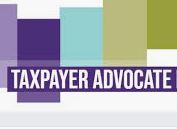
The Internal Revenue Service has advised that new rules under the CARES Act provide flexibility for health care spending that may be helpful in the current environment where more people may need at-home services due to measures to fight the coronavirus.
Telehealth And High Deductible Health Plans
Under the CARES Act, a high deductible health plan (HDHP) temporarily can cover telehealth and other remote care services without a deductible, or with a deductible below the minimum annual deductible otherwise required by law. Telehealth and other remote care services also are temporarily included as categories of coverage that are disregarded for the purpose of determining whether an individual who has other health plan coverage in addition to an HDHP is an eligible individual who may make tax-favored contributions to his or her HSA. Thus, an otherwise eligible individual with coverage under an HDHP may still contribute to an HSA despite receiving coverage for telehealth and other remote care services before satisfying the HDHP deductible, or despite receiving coverage for these services outside the HDHP. The temporary rules under the CARES Act, as extended by IRS Notice 2020-29, apply to services provided on or after Jan. 1, 2020, with respect to plan years beginning on or before Dec. 31, 2021.
Expansion Of Qualified Medical Expenses
The CARES Act also modifies the rules that apply to various tax-advantaged accounts (HSAs, Archer MSAs, Health FSAs, and HRAs) so that additional items are “qualified medical expenses” that may be reimbursed from those accounts. Specifically, the cost of menstrual care products is now reimbursable. These products are defined as tampons, pads, liners, cups, sponges or other similar products. In addition, over-the-counter products and medications are now reimbursable without a prescription. The new rules apply to amounts paid after Dec. 31, 2019. Taxpayers should save receipts of their purchases for their records and so that they are able to submit claims for reimbursements.
More information
The IRS will provide any further updates as soon as they are available on its webpage at IRS.gov/coronavirus
IR-2020-122






























Recent Comments